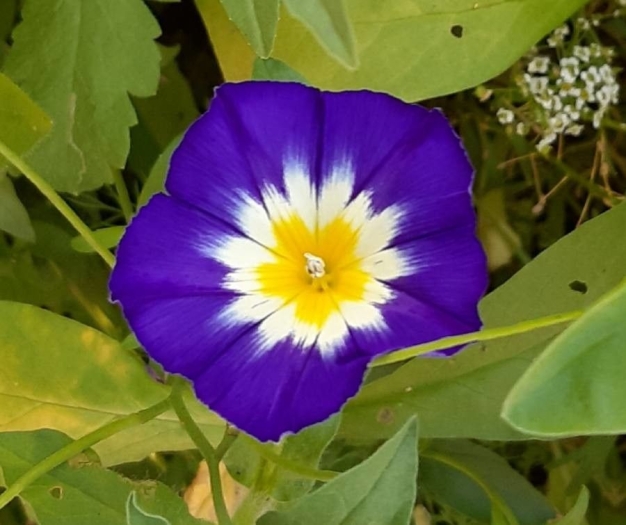Dwarf Morning-Glory
(Convolvulus tricolor)
Dwarf Morning-Glory (Convolvulus tricolor)
/
/

Philip Ruffe
CC BY-SA 4.0
Image By:
Philip Ruffe
Recorded By:
Copyright:
CC BY-SA 4.0
Copyright Notice:
Photo by: Philip Ruffe | License Type: CC BY-SA 4.0 | License URL: https://creativecommons.org/licenses/by-sa/4.0/ | Attribution: Philip Ruffe (cc-by-sa) | Rights Holder: Philip Ruffe | Publisher: PlantNet | Date Created: 2020-06-22T20:43:41Z | Title: Convolvulus tricolor L.: flower | Notes: Convolvulus tricolor L.: flower |




















































Estimated Native Range
Summary
Convolvulus tricolor, commonly known as Dwarf Morning-Glory, is an annual or short-lived perennial herb native to open, sunny sites in the Western Mediterranean region and the Maghreb. It typically grows to a height of 20-50 centimeters with a spread of 30-60 centimeters. The plant forms a low, spreading mound and is characterized by its tri-colored, funnel-shaped flowers, which are about three centimeters wide. The blooms are predominantly blue with a white throat and a yellow center, creating a striking display when they open in full sun during the summer and fall months. The flowers are particularly showy and can create a carpet of color when planted en masse.
Dwarf Morning-Glory is valued for its vibrant flowers and is often used in containers, hanging baskets, and as a ground cover in sunny garden spots. It is also suitable for rock gardens and coastal areas due to its tolerance of poor soils and salt. The species and the cultivar ’Blue Ensign’ have both received the Royal Horticultural Society’s Award of Garden Merit, indicating their exceptional performance in gardens. This plant prefers well-drained soil and thrives in full sun, with soil temperatures of at least 64 °F for optimal growth. While it requires medium amounts of water, it is relatively drought-tolerant once established. Gardeners should be aware that in some regions, Convolvulus tricolor can self-seed prolifically and may become invasive.CC BY-SA 4.0
Dwarf Morning-Glory is valued for its vibrant flowers and is often used in containers, hanging baskets, and as a ground cover in sunny garden spots. It is also suitable for rock gardens and coastal areas due to its tolerance of poor soils and salt. The species and the cultivar ’Blue Ensign’ have both received the Royal Horticultural Society’s Award of Garden Merit, indicating their exceptional performance in gardens. This plant prefers well-drained soil and thrives in full sun, with soil temperatures of at least 64 °F for optimal growth. While it requires medium amounts of water, it is relatively drought-tolerant once established. Gardeners should be aware that in some regions, Convolvulus tricolor can self-seed prolifically and may become invasive.CC BY-SA 4.0
Plant Description
- Plant Type: Herb
- Height: 1-1.5 feet
- Width: 1-1.5 feet
- Growth Rate: Moderate
- Flower Color: Blue, White
- Flowering Season: Summer
- Leaf Retention:
Growth Requirements
- Sun: Full Sun
- Water: Medium
- Drainage: Slow, Medium, Fast
Common Uses
Bee Garden, Bird Garden, Butterfly Garden, Deer Resistant, Drought Tolerant, Groundcover, Hummingbird Garden, Low Maintenance, Potted Plant, Showy Flowers
Natural Habitat
Open, sunny sites in the Western Mediterranean region and the Maghreb
Other Names
Common Names: Dwarf-Morning-Glory, Tricolour Convolvulus, Dreifarbige Winde, Liseron D’Été, Liseron Tricolor, Belle-De-Jour, Dagschone, Blåvinda
Scientific Names: , Convolvulus tricolor, Convolvulus versicolor,
GBIF Accepted Name: Convolvulus tricolor L.